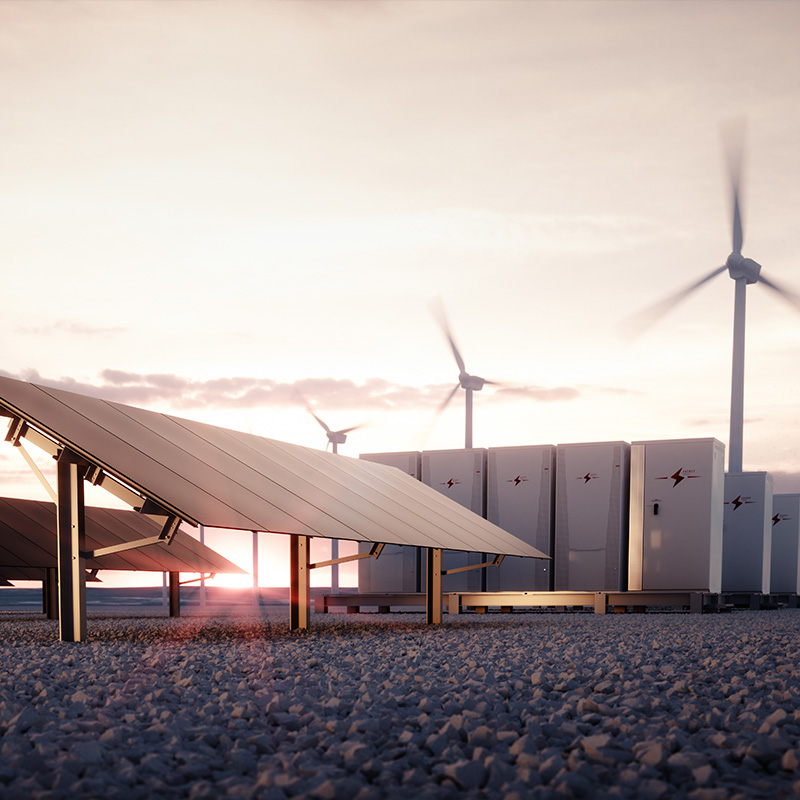
Is It Time to Go with the Flow?
The global shift towards clean energy alternatives has been a key area of innovation and progress over the last decade. Just like the internet revolution changed the world in the 1990s, clean energy promises to usher in a sustainable and clean approach to meeting our energy needs. However, how we store the clean energy we generate is still a major point of debate and continual research.
With the recent widespread uptake of electric vehicles, lithium-ion batteries have been the primary focus of energy storage research. However, some industry leaders are now asking whether we should set our sights on flow batteries and asking "is it time to go with the flow?". With the global renewables market expected to reach $1.5 trillion by 2025, and with solar and wind accounting for 86% of global renewable capacity additions this year, there's never been a better time to ask this question.
The Case for Flow Batteries
Flow batteries look set to play an important role in renewable energy storage solutions. Flow batteries work by exploiting energy differences in the oxidation states of elements (usually metals) within the battery. This allows the batteries to store or discharge energy as required. Although there are three types of flow batteries (hybrid flow, membrane-less flow, and redox flow), they all involve a liquid electrolyte that "flows" - which, you guessed it, is how they get their name.
The key difference between flow batteries and lithium-ion batteries is that in flow batteries, their energy and power is decoupled. With lithium-ion batteries, these are not decoupled. If you're struggling to visualise why this is important, then imagine a car. In a car, the internal combustion engine and the fuel tank are separate. If you want the car to run for longer, then you simply need to increase the size of the fuel tank, not both the fuel tank and the engine. With lithium-ion batteries, both the energy (fuel) and the power (engine) need to be increased to achieve a longer battery life (allow the car to run for longer).
The main reported benefits of flow batteries is that degradation is low, they can increase energy output without increasing power, and they are safer (lower fire risk). They are also simpler to monitor because there is no cell-cell or stack-stack balancing, unlike lithium-ion batteries
The Case for Lithium-Ion Batteries
Lithium-ion batteries have a considerable head start on flow batteries and have been widely utilized all over the world in a range of industries. This means that the cost of lithium-ion batteries has been continually dropping, making them a very affordable option. This looks set to continue and they will presumably get even cheaper. There's also much more research into these batteries when compared to flow batteries. While there is evidence of the reported benefits of flow batteries over lithium-ion batteries, more research is needed in this area.
The extraction of Vanadium for flow batteries is, at present, inefficient and wasteful. This is going in lithium-ion's favour right now, but this could change in the future. Vanadium extraction can be made more sustainable, and vanadium can also be recycled which will reduce demand for mining in the future.
What is the Verdict? Is It Time to Go with the Flow?
For large scale energy storage, it looks like flow batteries could be the future. However, lithium-ion batteries aren't going anywhere either. It's predicted that by 2025, Lithium-ion batteries will account for 60% of the sustainable storage market, and Vanadium flow will account for 30%. For small scale use (electric vehicles and home storage) lithium-ion batteries will likely remain the dominant form of storage. Looking to the future, the sustainable energy market will likely continue to be made up of a combination of lithium-ion batteries and flow batteries depending on the situation.
